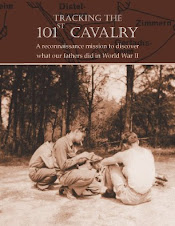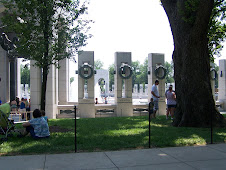Many sons and daughters of those prisoners have asked me to thank any members of the 101st Cavalry I can for saving their fathers. Others wanted the names of their fathers added to the website so they wouldn't be forgotten. Like many U.S. veterans, the Polish veterans were not eager to talk about the war years either, so their children are looking for all the information they can find.
We don't always learn many details about our fathers' service, but, if we are lucky, we do begin to get a sense of what they went through. As that happens, we, like the children of the Polish prisoners, end up with a lot of people to thank. We learn our fathers were wounded, so we thank the soldiers who carried them to safety and the medics who patched them up. We learn our fathers were sometimes imprisoned, so we want to think those who opened the gates and set them free. We learn that some of our fathers ended up buried in France, and we want to thank the people who tend their graves.
Right now citizens in Murnau are planning an event on April 29, 2015, to honor the men who were imprisoned in that camp and thank those who liberated them. Plans are just beginning, but it is likely that few of the men who actually lived through these events will be there. It will be their children who come to remember the past and pay their respects. When I received the following email yesterday, I realized that is probably the only reason I keep working on the website. It's just a way to say thank you and make sure some of these men are remembered. Today, Izabella Mrozik is making sure her father and a couple of other are remembered:
My name is Izabella Mrozik and my father was at Murnau during WWII. His name was Zdislaw Dionizy Mrozik he was a 1st Lt. He was attached to the Allied Forces in Germany after the war stationed at Kaiserslautern for some time and then sent on to France. We lived there with him in Fountainbleu from about 1948 through 1950 when he and my mother emigrated to the US. I am going to try to attach some documents to this email which I have scanned. His dog-tags from the camp, Polish Military ID card, weapons permit from the Polish Army when he was called to duty in 1939. I have quite a few more items from his time there.
I have attempted to find information on the camp and who liberated the prisoners for a long time - through several email addresses as a matter of fact! My father did not want to talk about the camp, he was a very private man and felt there was no point to us hearing about the unpleasantness of war.
I do have the names of a couple of other prisoners, one was Anthony Suski (he was involved in building a proscribed radio in one of the other buildings (not my dad's). And then there was Andrzej Falkowski.It's Thanksgiving this week. Isn't there someone you'd like to remember with gratitude?






